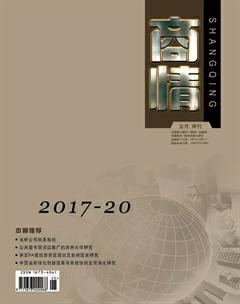Intercultural Communications: Stereotypes and Diversity
郑瑢
(西南財经大学 四川 成都 611130)
Abstract: With the advent of globalization, intercultural communications have taken place everywhere. It is worth to notice stereotypes and diversity in intercultural communications to facilitate better exchanges.
Key word: Intercultural communications, stereotypes, diversity
The trend of studying abroad is rapidly expanding worldwide, which has expanded intercultural communications within campus. Even though research has examined the impact of studying abroad, the effects of stereotypes on students overall cultural adaptation into the new culture has not been notably assessed. The study focused on stereotypes and diversity in intercultural communications through field research with international students to illustrate two dimensions in intercultural communications. Diversity is classified into individualism VS collectivism and context culture.
Diversity
Ties with people have always been the focal point of cultural differences between oriental and western countries. In this part, the author would mainly focus on ties with parents and with friends. The participant is a very independent girl. She went many places alone and very well planned the future, and rarely took the advice of her mother. She often argued with her mother and now she sent messages to her every three weeks. Apparently, they have relatively weak ties. To some extent, western people have weaker ties with their parents comparing to us. The ties do not equal to love, but show the characteristics of independent and individual.
About ties with friends, it is the same case. The participant had only one close friend who was her high school classmates. Even that, they had fewer contacts now because of different life directions. In the face of thorny problems or setbacks, she could only talk to and relied on herself. The reason may be attributed to individualism. She viewed the contacts as unnecessary, which will weaken ties with people in turn. To some extent, the ties reflect the different cultures of collectivism and individualism, with the former one emphasizing interpersonal relationships and the latter valuing individual spaces.
Besides individualism and collectivism, context culture is also a notable point in intercultural exchanges. There are high context cultures and low context cultures. High context one means people relies on nonverbal expression such as facial expression, signal, and gestures instead of speaking out. As to the participants who are from low context cultures, they find it hard to properly communicate with Asian people for our high context cultures. Thereby, people may need to pay attention to expression means in exchange with people low context cultures.
Stereotypes
Through view exchanges on dream life and spouses, stereotypes are discovered. Previously, French people were deemed as the representation of romantic, elegant, free, and open. But that view seemed to be proved wrong. Not all French are of that type. The participant said she lived with her mom and never met with her father. Her father left them long before with another woman, which made her feel unsafe to marry someone. She did not like going into a relationship too easily. But she still looked forward to find a right man to establish their own family. The views were quite in line with Chinese traditional and conservative opinions. Indeed, she could be easily reckoned as an open girl for she smokes, quite outgoing, and maybe for she is French. It is a stereotype. In fact, although people differ from each other for their culture backgrounds, in many cases, personal characters play a bigger part. So the lesson here is that dont define a person before you have enough knowledge about him/her.
Conclusion
Overall, stereotypes do exist in intercultural communication and people do not perceive that in most cases. But differences and similarities appearing in individuals can sometimes override that in cultures. People should avoid stereotypes and embrace diversity in intercultural communications.
References:
[1]Baumbaugh, Ariel D. San Diego State University Cultural adaptation of international students: Stereotypes and intercultural communication competence ProQuest Dissertations Publishing, 2015. 1591934
[2]Jingzhu Zhang, EFFECTS OF VIRTUAL CONVERSATIONS ON INTERNATIONAL STUDENTS INTERCULTURAL COMMUNICATIVE COMPETENCE, Dissertation Presented to The Faculty of the School of Education The College of William and Mary in Virginia, April 2015.

